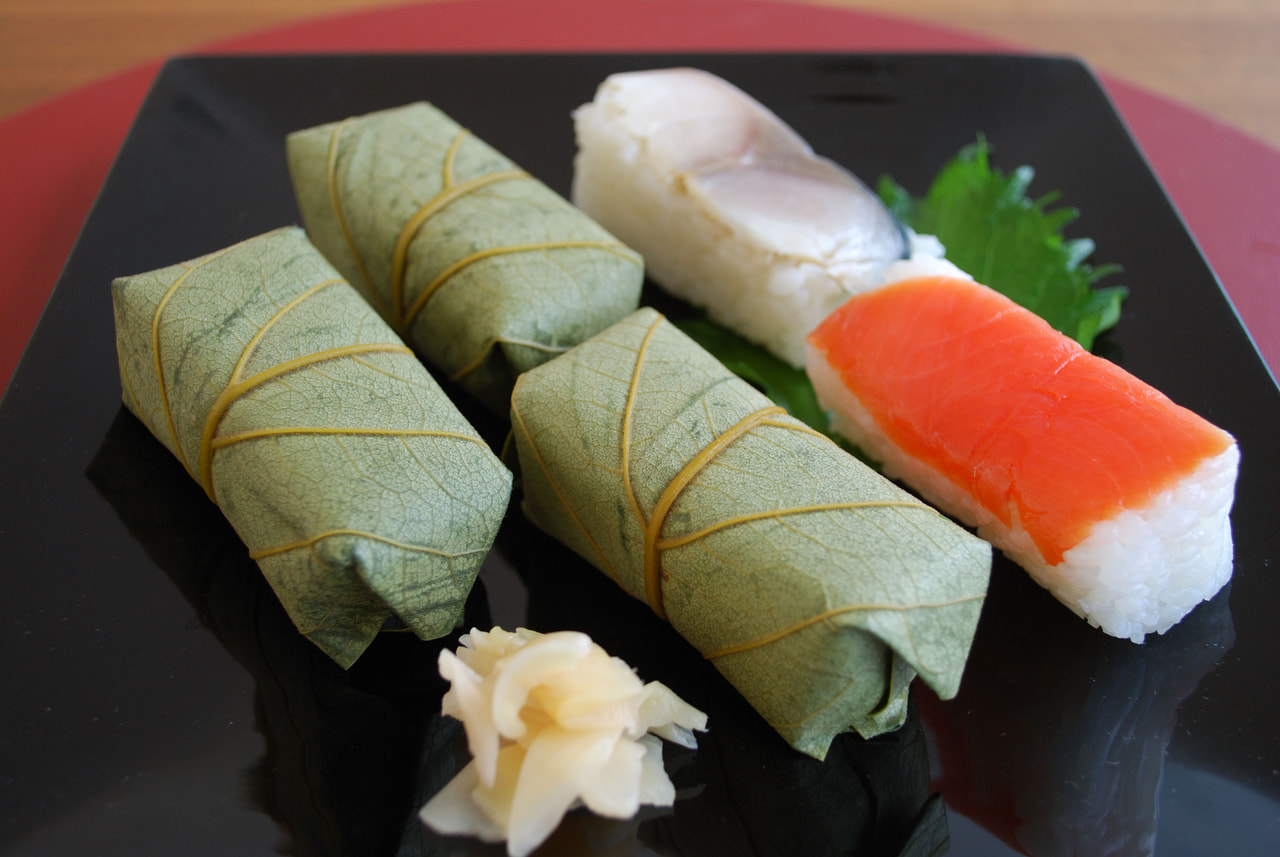
AREA_NAME
Kinki Area
PREF_NAME
Nara
RECIPE_NAME
Kaki no ha zushi
RECIPE_HEAD
Kaki no ha zushi are bite-sized pressed sushi made from vinegared rice topped with salted saba mackerel wrapped in a persimmon leaf. The eco-friendly persimmon leaf has anti-bacterial benefits. During the Edo period (1603-1868) the Kinokawa river in Nara was a way that seafood was transported from the ocean. Before refrigeration the seafood was preserved in salt. The salted mackerel was placed on bite-sized bundles of rice and wrapped in a persimmon leaf. A heavy stone from the river was set on the sushi overnight. It is believed this is the origins of kaki no ha zushi.
Both seafood and rice were precious at that time in the Yoshino area of Nara. Kaki no ha zushi was served at summer festivals and at the start of the boating season. During this same period in the Higashi Yoshino area houba, Japanese big-leaf magnolia leaves, were used to wrap sushi. In other parts of Japan sasa broad-leaf bamboo leaves and other leaves that have natural anti-bacterial properties have long been used to wrap sushi.
Salted and vinegared fish have less moisture than fresh fish and is harder to spoil. Additionally, the umami in the fish is enriched. Killing two birds with one stone by wrapping sushi with the leaves.
RECIPE_HEADEND
COOKING1
COOKING2
COOKING3
COOKING4

